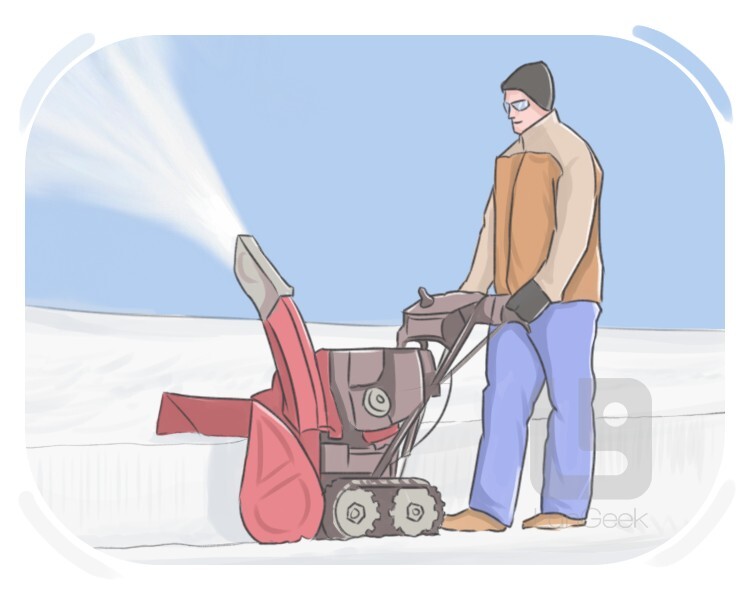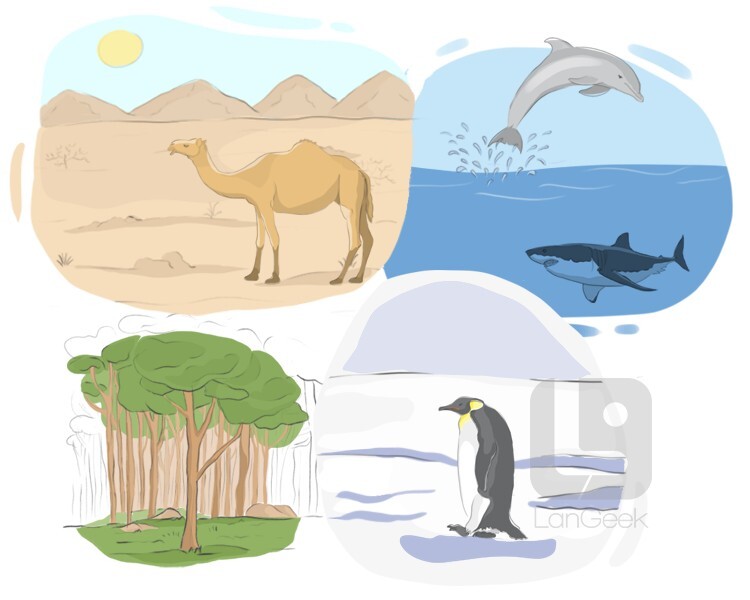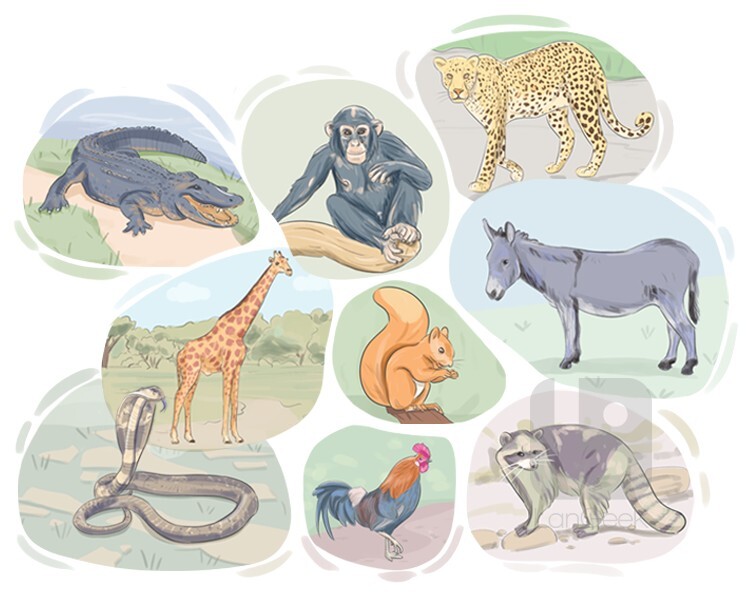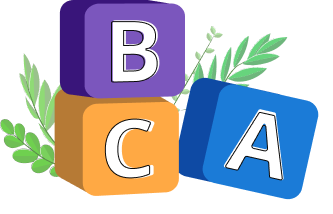
to remove unwanted or unnecessary things from something or somewhere
Grammatical Information:

the place or area in which certain animals, birds, or plants naturally exist, lives, and grows

consistent with the inherent characteristics or conditions associated with a particular person or thing

to reduce in amount, size, intensity, etc.
Grammatical Information:
a continuous reduction in something's amount, value, intensity, etc.

a large area of land or of the world with specific characteristics, which is usually borderless

involving a particular region or geographic area
the protection of the natural environment and resources from wasteful human activities
to show or mention something to someone and give them enough information to take notice
Grammatical Information:

to completely disappear or cease to exist
Grammatical Information:
a specific case or example of something
used to introduce an example of something mentioned

to regard someone or something in a certain way
Grammatical Information:

(of an animal, plant, etc.) being at risk of extinction

a group that animals, plants, etc. of the same type which are capable of producing healthy offspring with each other are divided into
Grammatical Information:

(of an animal, plant, etc.) not having any living members, either due to natural causes, environmental changes, or human activity
very close to a particular state, situation, or event, often with the implication that it is about to happen or reach a certain point

a situation in which a particular animal or plant no longer exists

the extensive removal of forests, typically causing environmental damage

a very large mammal with a thick gray skin and one or two horns on its nose, feeding on plants, which is native to Africa and Southern Asia
A rhinoceros is a large, thick-skinned herbivorous mammal characterized by its horned snout and formidable size. They are typically found in grasslands and savannas in Africa and Asia. Rhinos can weigh over a ton and have a tough, grayish-brown skin that protects them from predators. They have one or two horns on their snout, which are made of keratin, the same material as human hair and nails. Despite their tough exterior, rhinos are herbivores that mainly feed on grass, leaves, and fruits. They are also known for their poor eyesight, but their sense of smell and hearing are excellent. Unfortunately, many species of rhinoceros are currently endangered due to habitat loss and poaching for their horns, which are believed to have medicinal properties in some cultures.

a hard, pointed, often curved structure found on the head of some animals, such as cows, goats, and sheep, made of keratin or bone, used for defense, display, or digging
Horn refers to a hard, pointed, and often curved growth that extends from the head of certain animals, such as cattle, goats, and rhinoceroses. It is composed of a tough protein called keratin and serves various purposes depending on the species. Horns can be used for defense against predators, as a symbol of dominance and territoriality, for ritualistic or decorative purposes, or even as a sound-producing instrument. Unlike antlers, which are shed and regrown annually, horns are usually permanent structures that continue to grow throughout the animal's life. They are an iconic feature of many species and play a significant role in their biology and behavior.
someone or something that is possible to cause danger, trouble, or harm

to illegally hunt, catch, or fish on another person's property or in prohibited areas
Grammatical Information:
a person who illegally hunts or catches wildlife, typically for profit or personal gain
to introduce danger, a threat, problem, etc.
Grammatical Information:
to present a potential danger or risk
greatly desired
intended to look attractive rather than being of practical use
a war that is between people who are in the same country
Grammatical Information:
to redirect money, materials, or resources from their original intended purpose to another use
Grammatical Information:
a sum of money that is collected and saved for a particular purpose
the probability or chance of something occurring
the likelihood or chance of an event occurring or being true

to eventually reach or find oneself in a particular place, situation, or condition, often unexpectedly or as a result of circumstances
Grammatical Information:
an area occupied by an animal or a group of animals that is defended against others
defending a specific area against intruders to protect resources and ensure survival

(of an animal) to have sex and give birth to young
Grammatical Information:
to completely remove or destroy something so that it no longer exists
Grammatical Information:
the environment where a plant or animal species normally lives and grows, with the conditions that suit its needs
Grammatical Information:
at risk of harm or injury
in a situation where something harmful or dangerous is likely to happen, often due to a warning or risk
Congratulations! !
You learned 41 words from undefined. To improve learning and review vocabulary, start practicing.
Review
Flashcards
Spelling
Quiz
